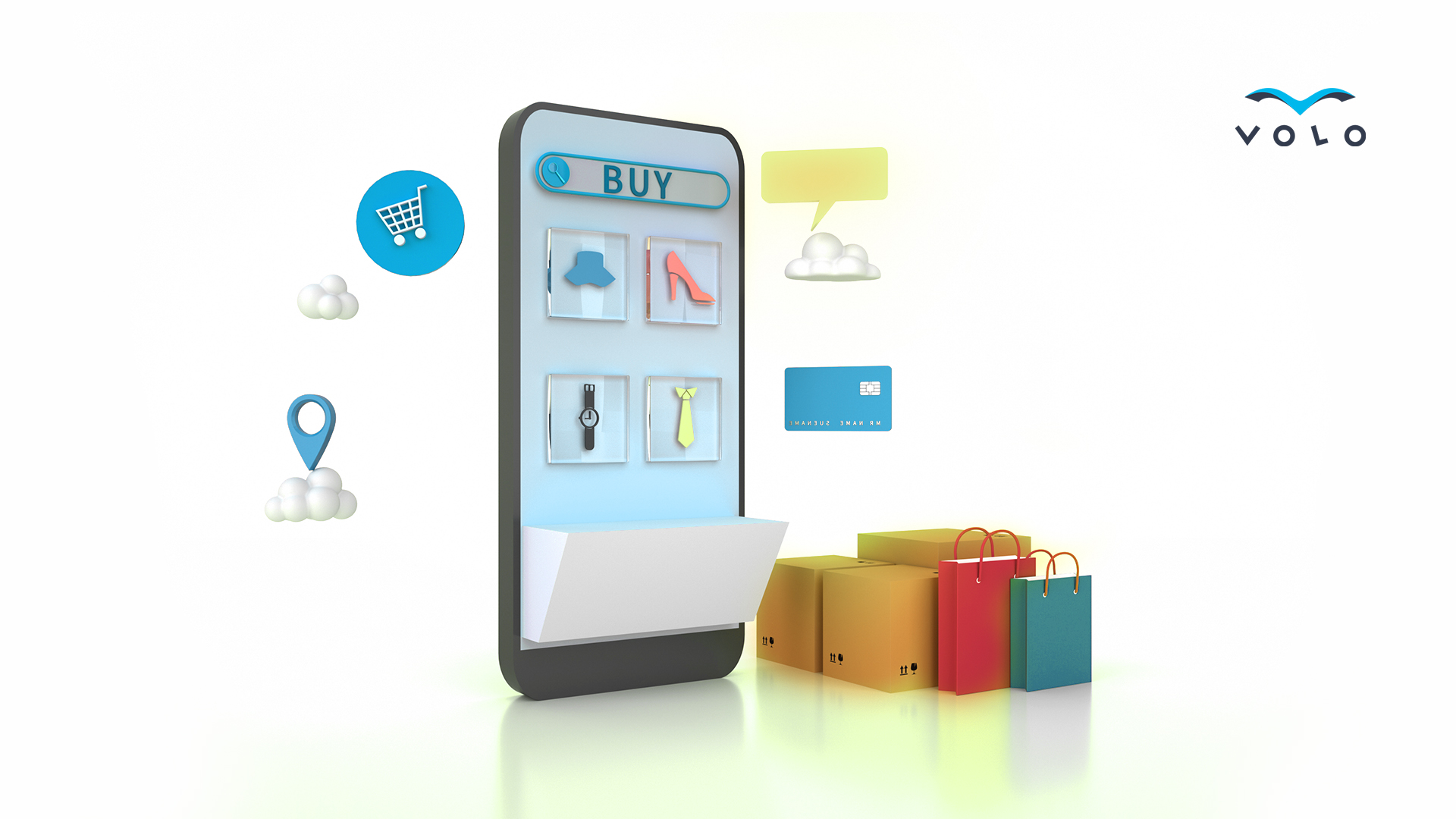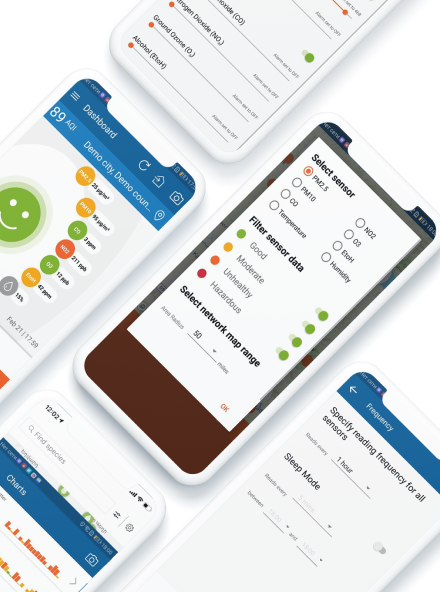
How to Succeed in M-Commerce: Trends for You to Know
27 Sep 2021

What’s the first thing you do when you hear about a sale or a new product that peaks your interest? Chances are, you’ll reach for your smartphone to check it out instead of rushing to your computer. This is how mobile users have made Mobile Commerce a global trend.
Just like shoppers at brick and mortar stores, m-commerce users have their own personal habits and preferences. Yet, they are all united in their preference to have, to know, and to see something at a given moment in a given place. This is called the “mobile moment.”
Let’s take a look at how big of a deal this “mobile moment” is for retailers and buyers in 2021. Here are some mobile commerce statistics to prove that having your business go mobile can be a highly lucrative investment:
- By the end of 2021, m-commerce sales are expected to reach $3.56 trillion.
- Over 1 billion people use mobile banking to make their daily payments and transactions.
- About 67.2% of all e-commerce is mobile.
- There are 7.1 billion mobile phone users (the overwhelming majority being smartphone users) around the world.
- 79% of smartphone owners have made an online purchase through their mobile devices.
- In 2020, US mobile retail sales were $339.03 billion and are expected to grow by 15.2% to reach $359.32 billion by the end of 2021.
- 53% of consumers use their mobile devices to make their daily purchases.
The m-commerce trends are diverse and driven by new technologies and solutions emerging every other day. Still, there are some key points defining the global m-commerce we know today. Below you can find a list of the latest m-commerce trends to keep an eye on while making your business more mobile-friendly.
Progressive Web Apps
Did you know that around 53% of mobile users will leave your website if it takes more than 3 seconds to load? The thing is that mobile sites do not have the required capabilities to meet customer expectations. The reason for the poor quality of these sites is that most businesses look down upon the importance of building user-friendly mobile sites.
Whether you’re ready for this new reality or not, mobile is taking over the market now and it’s time for you to invest in developing and implementing mobile-oriented business strategies. Progressive web apps (PWAs) are one example of such an investment.
PWAs are the golden mean between mobile apps and mobile websites. Your users will not feel much of a difference between a progressive web app and a standard app. However, unlike the latter, progressive web apps are built using web technologies. PWAs do not require you to install or download them on your phone. They are compatible with any phone and are continually improving, introducing new features and functionalities.
Social Commerce
Social media is no longer merely a means of creating brand awareness and attracting more leads. You can now use it to sell directly to your customers. Facebook and Instagram now allow business owners to create shoppable posts, where they tag products and prices. These posts will display all the required product information to your clients, eventually leading them to place an order directly through the social platforms.
Social commerce makes things faster and easier for your customers, releasing them from the hassle of opening a new browser, going to your website, and doing a long product search. Think of it this way: your target audience is already on social media pretty much every day. Why not reach them through these platforms instead of trying to lead them to your website. The modern customers are lazy - let them indulge in that laziness.
There are around 1 billion monthly active Instagram and 2.85 billion Facebook users worldwide. According to a recent study, businesses that invested in social commerce have witnessed a 20% increase in revenue. Considering the fact that this new trend is rapidly growing in popularity, you can expect these numbers to continue to increase with time.
Omnichannel Shopping Experience: Being Everywhere
As we’ve talked about it earlier, more and more organizations are facing the need for digital transformation. A mobile-first approach can be a great kick start that secures your omnichannel presence and availability for your customers. In addition, it’s a great source of generating new customers online, since, according to Google surveys, 9 out of 10 shoppers do not have their minds set on a particular brand when they begin looking for information online.
Voice Shopping
65% of people who use voice-enabled technology say they cannot imagine living without these devices, about 43% of consumers use voice technology to shop, 52% would like to receive info about deals, sales, and promotions from brands, 48% would like to receive personalized tips and information from brands to make their lives easier, 22% finalize their purchases using voice alone, and 31% of smartphone owners use voice search at least once a week. Additionally, Gen Z uses voice search daily (to be more precise, 55% of teenagers). M-commerce makes it possible for your company to tap into this vast pool of opportunity.
Personalized Experience
No matter where technology might lead us, one thing is for sure - personalized experiences are here to stay. 90% of organizations that invest in personalized consumer experience say that it significantly contributes to increasing business profitability. Technologies like AI provide great new solutions from AI supported chatbots to personalized data collection, analysis, and customer needs prediction, all of which will make it easier to achieve a whole new level of personalized experience along the customer journey.
Single-Click Experience
Before September 2017, the “one-click” buying service was a patent of Amazon, available exclusively on amazon.com. Things changed when the patent expired. Now, the single-click experience is a core feature of many companies willing to speed up the buying process for their customers.
The standard transaction processing in online stores requires customers to reveal personal information such as name, credit card number, expiration date and verification number, shipping address, billing address, and email address. This is quite a hassle for today’s busy and demanding customers and a major reason behind shopping cart abandonment on mobile websites. The shopping cart abandonment rate for mobile sites is 97%, while for mobile apps it is only 20%.
Mobile apps offer the option of storing customer data on their profile which allows customers to complete the order with a single click. There’s no longer a need to enter personal information with every purchase.
Providing a single-click experience to your customers sets the ground for boosting your conversions and improving your bottom line.
Mobile Payments
By the end of 2021, mobile payment volume will rise tenfold as compared to past years. Popular mobile wallets like Apple Pay, Google Pay, or Alipay are rapidly growing in popularity and are widely used for both online and in-store purchases. They are fast, safe, and convenient. Don’t hesitate to boost your m-commerce strategy by becoming mobile payment compatible.
Proximity Marketing
You can use m-commerce trends to attract customers to your brick-and-mortar store, too! Place Wi-Fi and BLE-powered beacons around your store and send customized offers and discounts to potential clients who are open to sharing their current location. The beacons will send a promotional message to the mobile customers’ phones when they’re in the vicinity of your store. In other words, you will increase the flow of customers to your physical store via proximity marketing.
Crypto Payments
It is forecasted that the cryptocurrency market will be worth $1.40 billion in 2024, and, it’s entirely possible that blockchain wallets will completely replace traditional payment methods. Making your m-commerce application compatible with crypto payments ensures faster and safer transactions that are also anonymous to boot. Future-proof your retail business and ensure a smooth future transition to crypto as more and more customers are becoming increasingly interested in cryptocurrencies and blockchain wallets.
Chatbots
It should come as no surprise that mobile chatbots are also trending - they offer a slew of benefits:
- 24-hour service
- Instant feedback
- Quick answers to easy and/or complex questions
- Improved customer experience thanks to the quick solution of complaints/issues
Moreover, around 54% of consumers prefer to talk to a chatbot over a human in order to save time.
AR and VR in M-Commerce
Finally, by harnessing the potential of modern technologies like AR and VR, mobile commerce is capable of upgrading customer experiences up to the level of virtually imaging a product before even opting to buy it. This is done through adding visuals, sounds, and other sensory stimuli. Many organizations are already successfully applying AR technologies to their businesses with impressive results. These technologies enable the creation of a 3D environment for users by means of such devices as goggles, VR headsets, and smartphones.
AR and VR will continue to make the overall shopping experience more convenient, engaging and fun. Around 40% of consumers are ready to pay extra for a product if the brand provides AR features. For example, during an in-store purchase, your customers can simply use their phone to instantly find the product they want and check other product-related details, instead of running around the shop in search of a staff member. VR also enhances shopping convenience by allowing your consumers to have a virtual tour of your shop from the comfort of their home.
Do keep in mind that 75% of brands are currently planning to invest in AR or VR, so you decide whether you want to become an early adopter or join in on the party at your own pace.
Final Words
If you’re looking into mobile commerce app development either to create a whole new mobile experience for your business or to enhance your existing one, we’ll help you speed up your game! Drop us a line for a free consultation!


